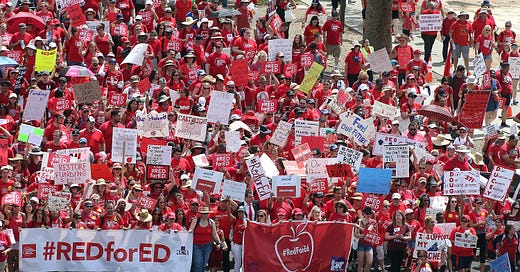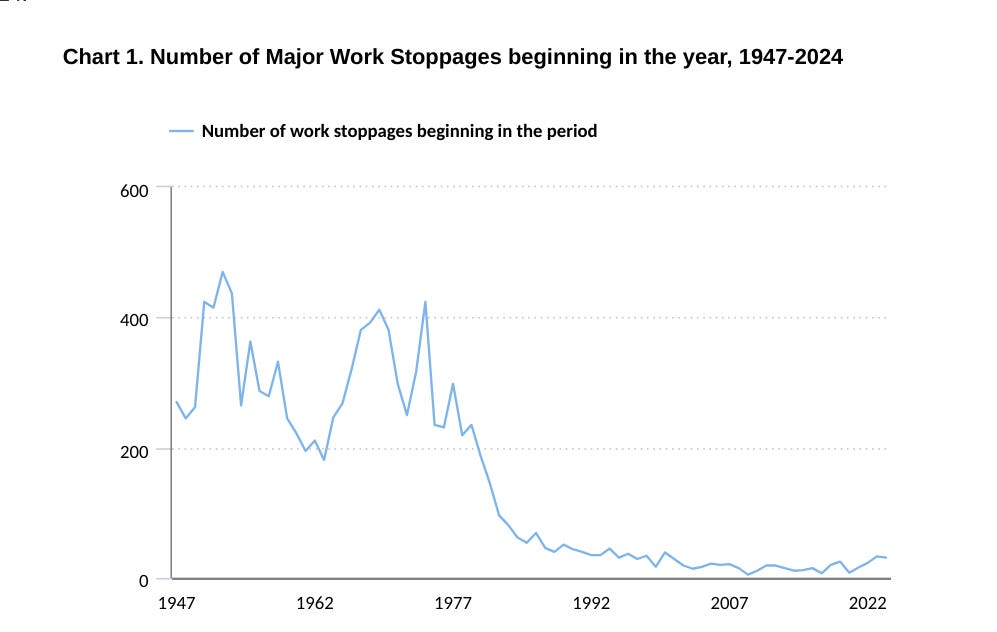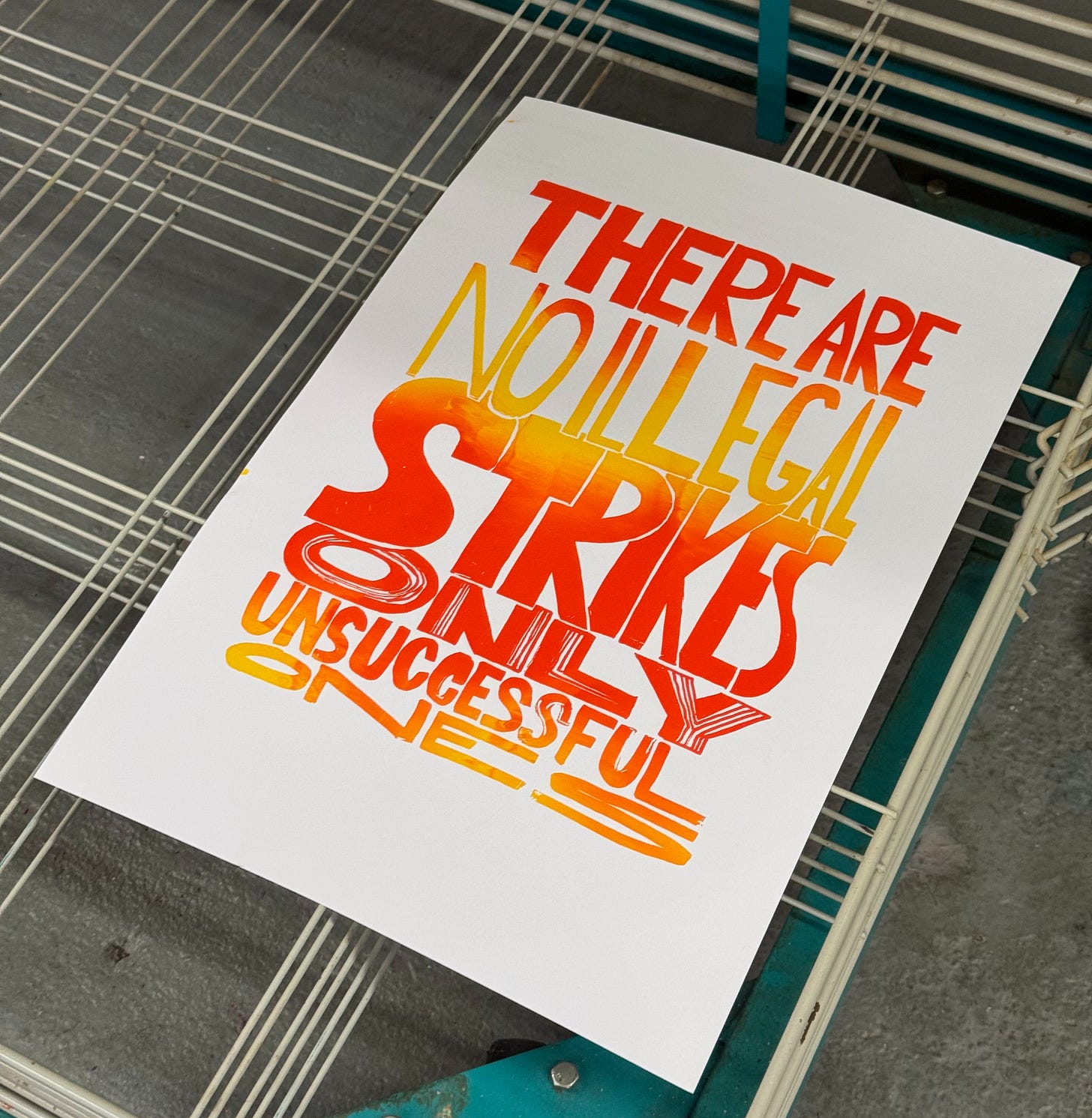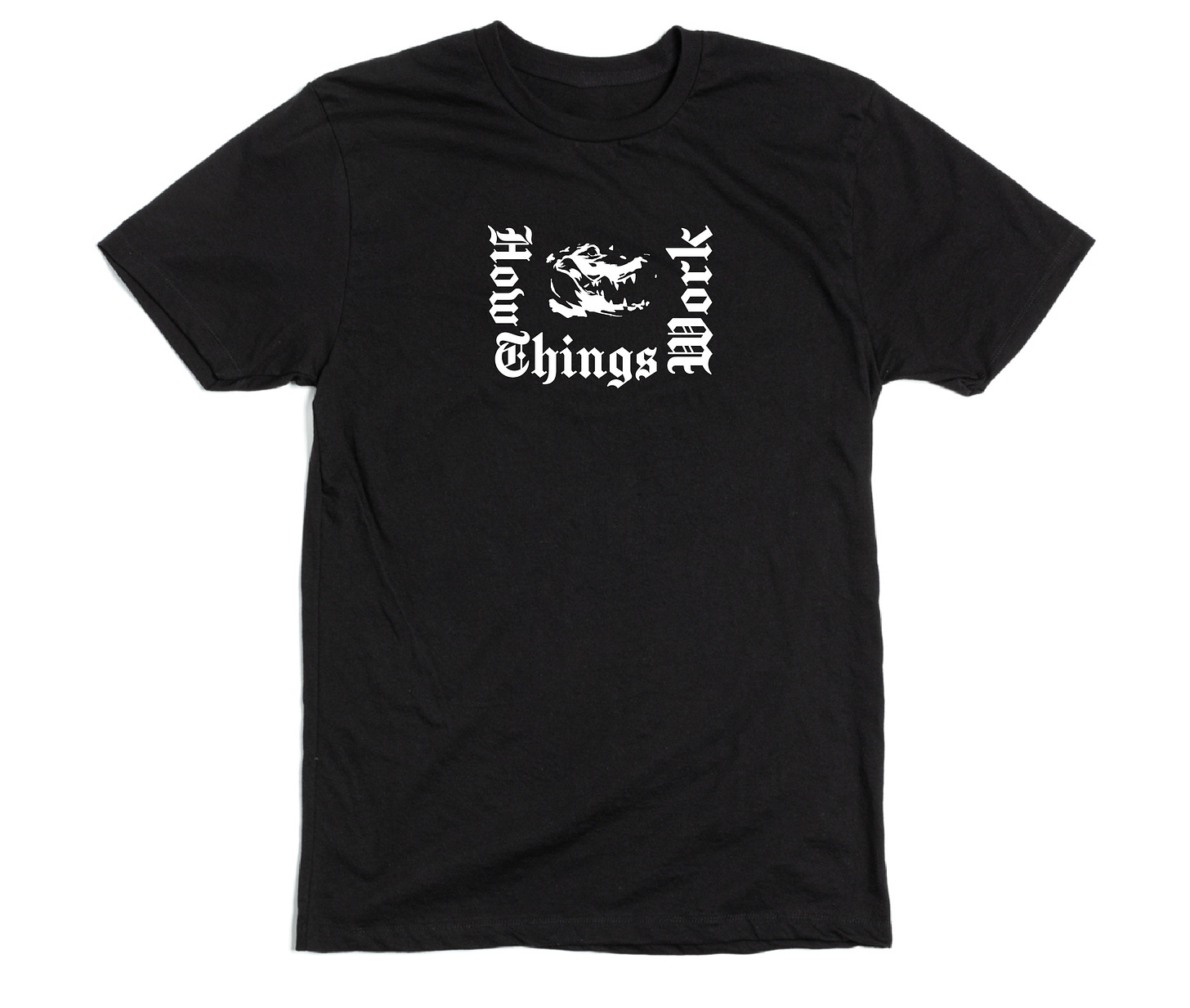Not Just Unions; Strike-Ready Unions.
The illusion of labor power without strikes is coming to an end.
I wrote a piece for In These Times this week called “Unions Without Strikes,” which was prompted by something very big and very ominous that has been on my mind: the fact that there have been no strikes, or even real hints at strikes, in response to the most egregious government assaults on organized labor since WW2. Today, I want to briefly expand on a couple of points in that piece—one analytical, and one that I hope is of immediate practical use.
The power to withhold your labor—the power of the strike—is the seed of all worker power. If you are a poor working person with no economic resources or political connections, what leverage do you have against your richer, better connected, more legally protected boss? The answer is: your leverage is your own work. The fact that you have a job is proof that your employer wants or needs you to do work. If all the workers get together and agree not to do the work, your employer’s enterprise is brought to standstill. This gives you the ability to force your employer to the bargaining table, to negotiate mutually agreeable terms of employment with you, lest they not have any access to labor. Labor unions arose as a way to institutionalize this power, to expand it and make it widely available. Today, unions do many things, but all organized labor power is rooted in the power of the strike. It is the one form of worker power that is not contingent on anything else. It cannot be taken away. It is inherent in the nature of being a worker.
In the early 20th century, when the American labor movement was being built, striking was the way that workers won unions, won concessions from employers, won legal rights, won everything. (This book or this book or this book are good entry points into the wild world of US labor history.) Eventually, after decades of strikes and sacrifices, laws were passed to provide a legal framework for the relationship between workers, unions, employers, and government. These laws have many flaws, and are tilted against organized labor in many ways, and are always an ongoing legal battlefield, but the underlying takeaway here is that since 1935, unions in America have existed not in a Wild West world where the strike was the only way to get things done, but in a world where there are intelligible laws and government agencies that mediate the employer-labor relationship. Contracts and laws and NLRB regulations became the dominant playing field of union power. Strikes still happened, but an overriding purpose of labor law has been to encourage “labor peace”—to minimize the need for work disruptions.
Today’s labor movement is the product of 90 years of this dynamic. Today’s big unions have been built to operate and wield power in the context of these rules. Most major unions are more commonly engaged in legal fights (where courts and regulators decide the limits of worker power) and political fights (to pick the referees who will ultimately write the government’s rules) than in strikes.
This is even more true in the public sector, which represents about half of union membership in America today. Millions of federal, state, and local government workers are legally prohibited from striking. Their unions are primarily administrative entities that negotiate and oversee contracts. These unions, to varying degrees, are the embodiment of the premise that organized labor power can exist in the absence of the strike—that laws, contracts, and regulations are enough to guarantee workers their rights.
That premise turns out to be false. We are now living through a brutal demonstration of its emptiness. The Trump administration, which cares only about power and not at all about the traditional niceties of law and public relations, has begun simply throwing union contracts in the trash and declaring that existing federal unions do not exist after all, because the boss says so. This is the worst thing that a boss could possibly do to a union. It should prompt the strongest response. If anything should cause a union to strike, it is this. Yet the unions in question have not struck. Why? On a surface level, because they are not legally allowed to strike. But on a more basic level, because they have been built from the ground up as entities that do not consider strikes to be within their purview. The law, in other words, is not their deepest weakness; their deepest weakness is the fact that they do not imagine themselves to be capable of striking and therefore have not done the constant organizing work that would enable them to strike and therefore have little capability of carrying out a strike even if they wanted to. This is true not just of AFGE, the federal union that has absorbed the brunt of Trump’s attacks so far, but of most (not all) public sector unions in most (not all) red states. It is also true of many major private sector unions that have leadership that is lazy and/ or unimaginative, who have accepted that their power rests mostly in politics and lawyers, and who, because of this, likewise fail to do the internal organizing and training and education and mobilization work necessary to create strike-ready unions.
I have written for many years about the labor movement’s failure to organize widely enough, which is a key reason why we do not have enough union members in this country. That is a serious problem. Yet we are now seeing another, equally serious problem: a hollowness at the heart of organized labor’s power resulting from an atrophying of its strike muscles. I like to rage against all those lazy and unimaginative union leaders as much as anyone, but this problem is mostly a structural result of unions that have been built to operate under a social contract that is abruptly being withdrawn. It is kind of the labor version of a cosseted modern suburban American being suddenly dumped out in the woods with nothing, and finding that all those years of progress have robbed us of the survival skills our ancestors had. If we don’t relearn them fast, we will die.
The task of organizing new unions is as urgent as ever. But those of us who do have unions now have another urgent task: ensuring that our unions are strike-ready. That means that if the government pushes us into a corner, and carries out outrageous assaults on unions of the sort that have already occurred, and operates in a lawless manner, we must be capable of using our one inherent power, which is the strike. Strikes are always difficult for the workers involved. Strikes always involve a huge amount of work to organize and carry out. Nothing I say here should be read to imply that strikes are not hard. The calculation in every strike is that the alternative to striking is worse. Usually, this alternative means “the boss refuses to negotiate a reasonable contract with us.” Sometimes, as now, it means “the boss is attempting to eradicate us and we are in a stone cold power struggle and we will either strike to exert our power or be eradicated.”
There is a certain level of resistance within the union world to accepting these facts. First people will explain to you that strikes are illegal, so advocating for strikes is ridiculous; then they will explain to you that strikes are a lot of work to organize, and they are too busy to do it; then they will explain to you that strikes are scary, and workers don’t want to do it. As I said, these things are true. The mistake is in believing that these things mean that we do not need to get ready to strike anyhow. Union leaders who believe this are like the driver of a car who is patiently explaining to you that speeding is illegal and dangerous—while someone is in their back seat rapidly bleeding to death and begging to get to the hospital faster. Okay, sure. Stick to the rules and we will die. Those are the choices at hand.
This is not a hopeless situation. Far from it. If you are a union member, you can be the catalyst of the change that the labor movement needs right now. Look at your own union and ask yourself: If you really needed to, in an existential battle, could your union pull off a strike on relatively short notice? If the answer is “no,” there is organizing to be done. Members need to be educated about the political situation. They need to be informed of the peril that unions face. They need to be made to understand what their choices are. They need to grasp the power of the strike, and why it works, and what it would take to do it. As the wise saying goes, “There are no illegal strikes, only unsuccessful ones.” If working people agree to act in solidarity and have the willingness to strike, they can strike, and nobody can stop them. And if they have thought carefully about their leverage, and they act wisely, they can win that strike, no matter what the law says. Ask all the teachers who won their illegal strikes all across America in 2018. For that matter, ask any sanitation worker. If they stop picking up the garbage long enough, they will have their demands met. Think about power, not laws made by people who are out to destroy you.
I have met many newly organized union members, full of enthusiasm but not well versed in the rules of all this, who have asked their union reps or officers about these things and who have been told “We’re not allowed to strike” and who then take that as gospel and assume that strikes just are not an option for them. This irks me. It is irresponsible. The real answer, the thing that union members should be told, is “Strikes may be illegal, and as a union employee I cannot advocate for you to do anything that violates the law or the contract, but philosophically speaking, there are no illegal strikes, only unsuccessful ones, and union members can do anything that they collectively agree to do, and also here’s some stuff to read about labor history.”
In the labor movement—as in many parts of civil society—the political extremity we are living through is revealing the shortcomings of the moderates. When radical things happen, only fools do not become more radical. History can explain the present, but getting locked into a dynamic that no longer works is how things go extinct. The strike is our power. Get ready, willing, and able to use that power. The greatest tragedy would be seeing unions shrivel up and wither away without a fight.
Merch
Here’s an exciting announcement: For the first time in history, How Things Work has merch. Specifically, this beautiful t-shirt. It is union-printed in the USA. You can order it right here for $31. I am also putting a “merch” tab on the front page of HamiltonNolan.com, where you can order them. Thank you for supporting How Things Work and looking cool at the same time. [Merch Store]
More
Related reading: They Are Going to Take Everything If We Don’t Stop Them; Strike, Or Else; Dark Times Are Coming; Getting Comfortable With Illegal Strikes; The Hammer, Not the Handshake.
My essay about this for In These Times is here. I also wrote about book about labor power, why it’s important, how we rebuild it, and how it can save America. That book is called “The Hammer,” and you can order it wherever books are sold. If you’re interested in having me come speak to your union or other group, email me. If you’re interested in organizing your own workplace, reach out to EWOC or the AFL-CIO.
Thank you all for reading. As you can see, How Things Work is a free publication. It has no paywall and anyone can read it without paying. This is possible only because a bunch of readers just like you choose to be paid subscribers, which keeps this place going. In addition to buying a t-shirt, the best thing you can do to support How Things Work is to become a paid subscriber today. It’s affordable, and it is the thing that allows me to keep the site free for the public. This is socialist media, and we all make it work together.













I'm an organizer for the SF Bay Area IWW. Yes, we are a real union. We represent fourteen small shops, mostly retail and recycle workers. We absolutely refuse to sign off on no-strike contracts. This has made for some arduous contract negotiations but we stand tough. Currently, Urban Ore, a shop in Berkeley that repairs and sells recycled goods, has been on a ULP strike for nearly three weeks. The support from the community and the workers is overwhelming. Owners are refusing to negotiate a first contract, so far. My point is this: no union should sign off on no-strike. When the time comes to renegotiate, no-strike needs to go. Yes, workers can (and should) strike either way. But let's dump no-strike wherever possible.
I’m gonna need Molly’s contact because I want that print BIG in the atrium of our union office and on a nice soft, fitted woman’s tshirt.